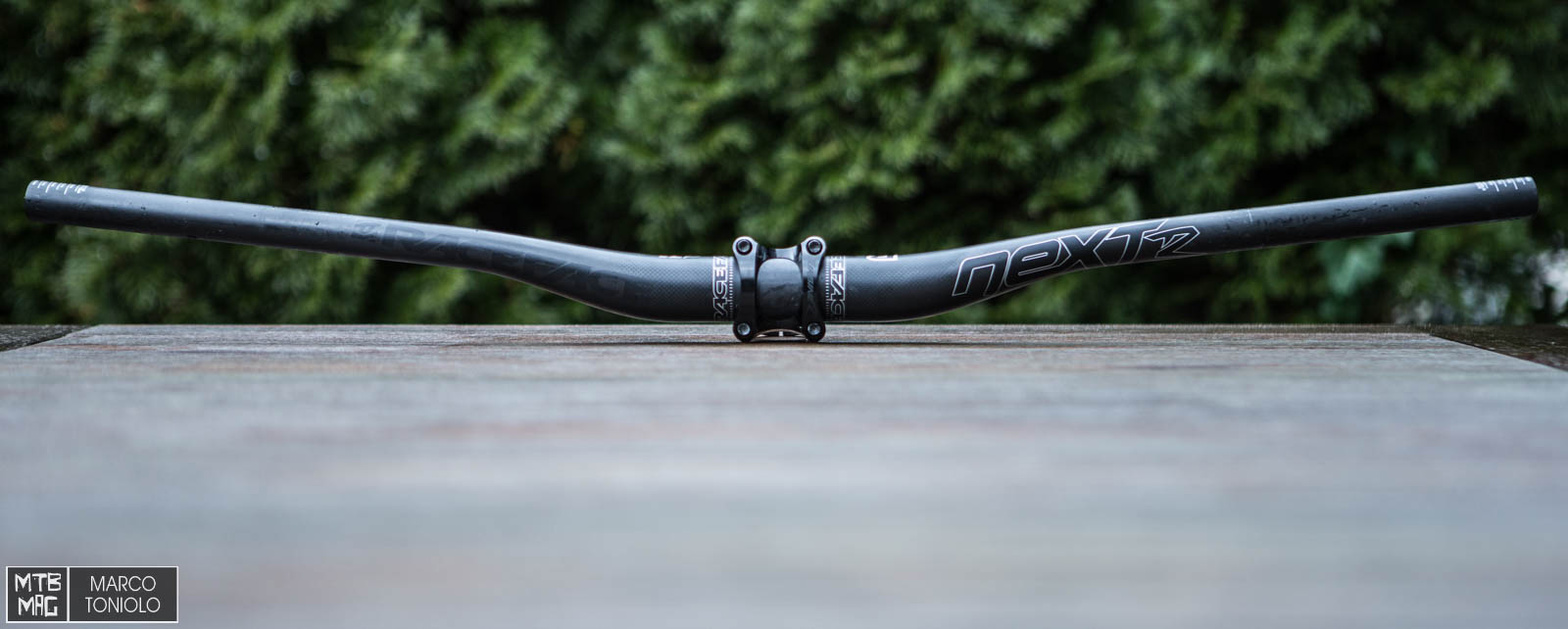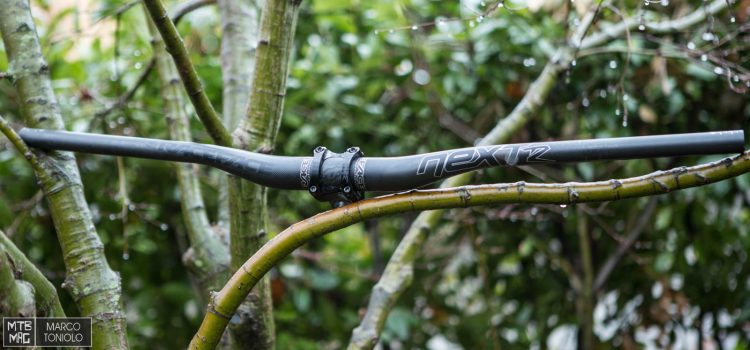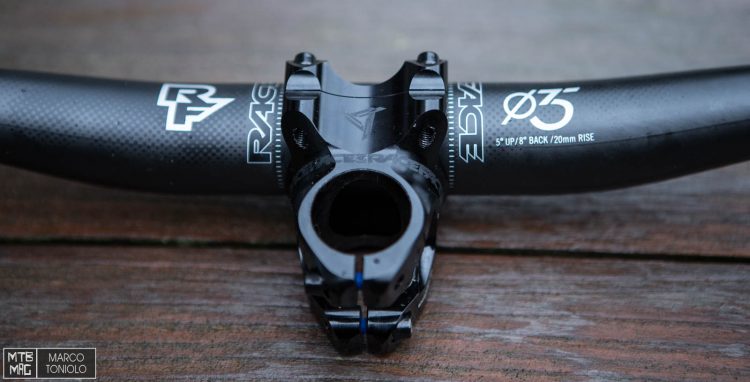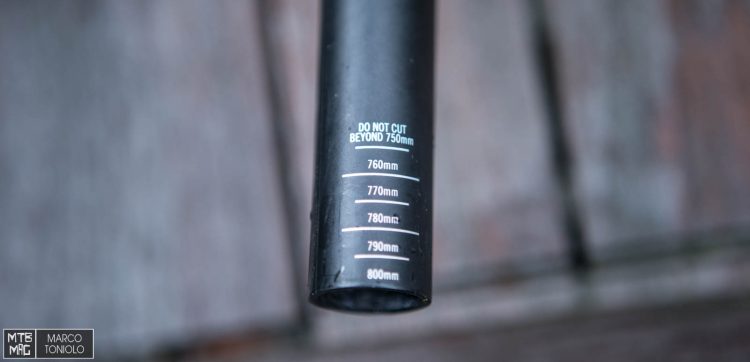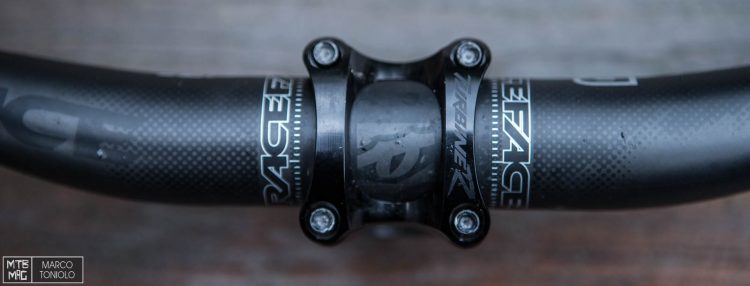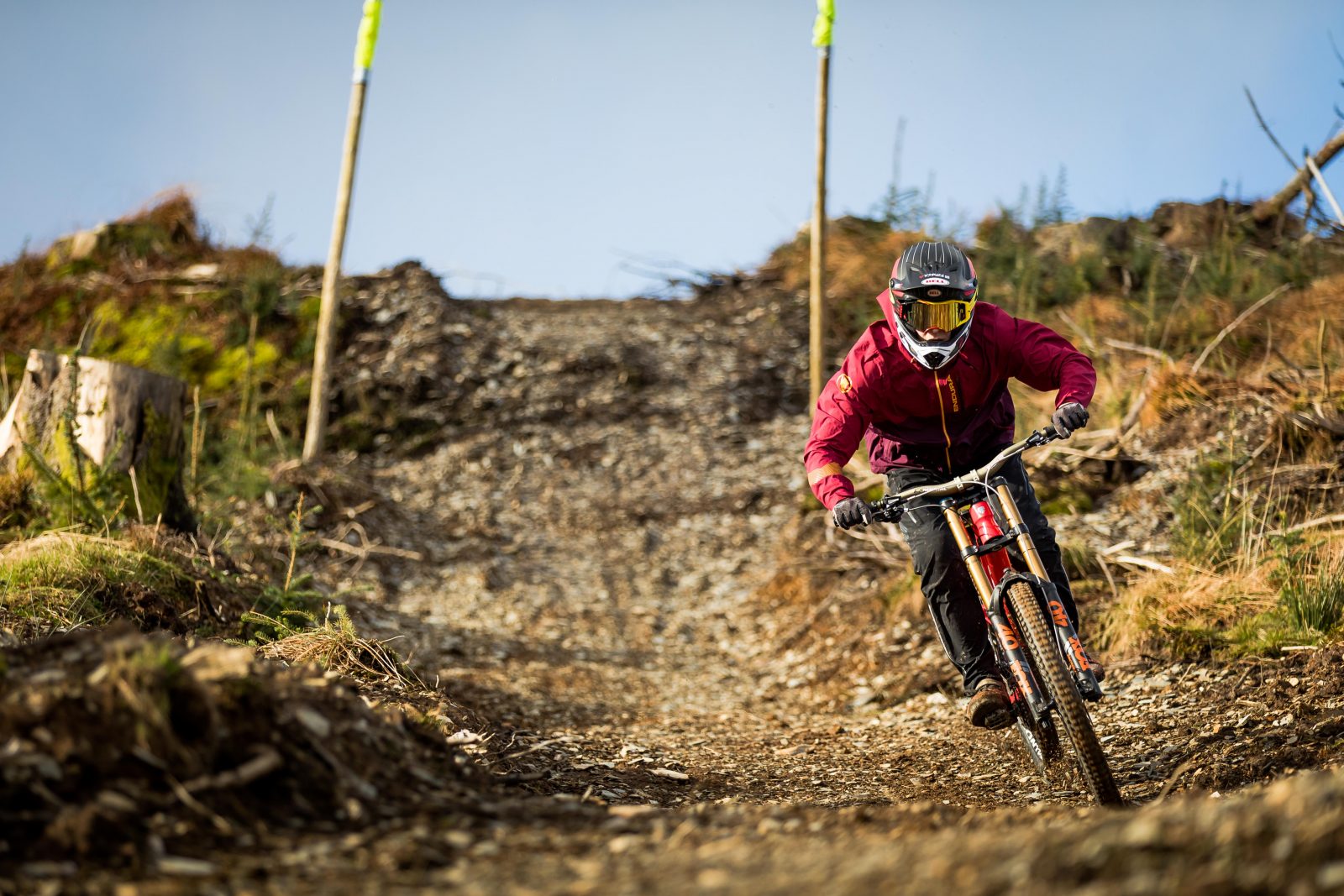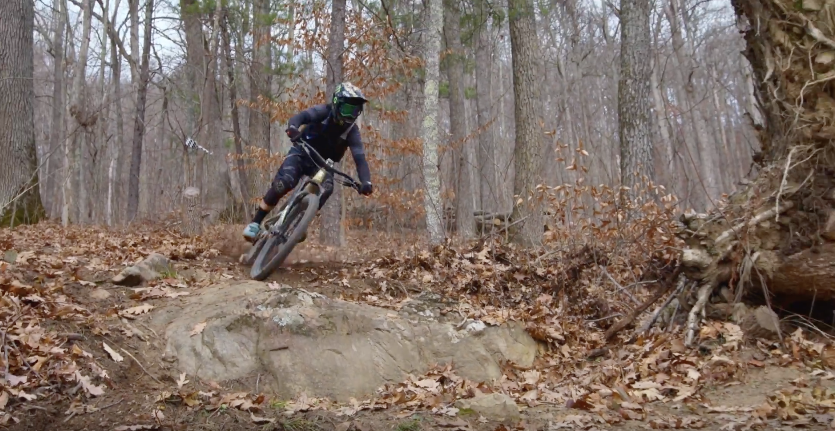In this article we test out the handlebar and the stem that we installed on our Yeti SB 5.5 for a long term review: the Race Face Next R and Turbine R. Both have a diameter of 35mm and are clearly built for enduro and aggressive trail riding.
Race Face Next R Handlebar
Material: carbon
Clamp diameter: 35mm
Sweep: 8° backward, 5° upward
Rise: 20mm
Width: 800mm
800mm bar weight: 211 grams
Price: 159.90 Euro
Turbine R 35 stem
Material: CNC Aluminum
Bar diameter: 35mm
Rise: 0mm
Sizes: 32mm (tested), 40, 50, 60 and 70mm
Weight: 130 grams
Price: 109.90 Euro
On the Trail
The standard bar is 800mm wide, which is not for everyone. It may be too much, particularly for those who often ride heavily wooded trails. That’s not exactly a problem with the Race Face Next R: it can be shortened with accuracy down to 750mm thanks to the cutting guides printed at each end. It should be noted that a carbon bar must be cut following the right procedure, otherwise you are going to destroy it. You’ll need some masking tape, a cutting guide and a hacksaw with the proper blade for cutting carbon. A bench mounted vice also helps. You local bike shop should have all of the above and would likely cut your bar down in exchange for a few beers if you’d like to save yourself the hassle.
I liked the 800mm width, so that with the arms open wide, the chest shifts forward, allowing me to load the front better, a thing I appreciate a lot not only in corners but also on technical climbs. On the other hand, I chose a very short stem, since the L size of the Yeti SB 5.5 has a reach of 442, which is quite long for me.
It is easy to center the handlebar, thanks to the printed graphics and a thin plastic layer where the stem is to be tightened, to lock it firmly in place.
Some years ago, when Race Face was one of the first brands to adopt the 35mm diameter, I was quite skeptical, mostly because I had never noticed any stiffness or precision issues coming from the cockpit. I thought it could have transferred too much vibration to the hands of the rider, making the bar uncomfortable. 4 years later, handlebars have gone wider, with more leverage and overall flexibility, and in the end, as carbon fiber is used more and more on top-end models, my fears have faded away completely. This 800mm carbon bar, which certainly absorbs vibrations better than aluminum, is comfortable even on long, rough downhills non-stop. For the record, I mostly used the new Ergon GE1 Evo Factory grips, with which a specific test will follow.
Many pages can be written about the actual stiffness of a 35mm stem, but this is not the goal of the article. A laboratory test is the only way to measure the real advantage in stiffness determined by a wider diameter. On trail, it is almost impossible to feel the difference, but aesthically I can say that it matches perfectly with aggressive bikes such as the Yeti SB 5.5 – with little more weight you get a solid cockpit, well mated to a Boost fork and wide tires.
It is easier to talk about angles: given the moderate sweep, it is isn’t difficult to find the perfect hand position to avoid soreness. As already said, the bar/stem combination proved to be rock-solid, but never too extreme in terms of comfort and vibration reduction.
Conclusion
Don’t be scared about carbon: a well-designed carbon handlebar is solid, durable and absorbs vibrations better than a comparable aluminium one. The Race Face Next R 35 and RF Turbine R35 combination provides a compact and comfortable cockpit, with nice lines and precise to handling. If 800mm isn’t for you, the bar can be easily cut down according to your personal preference.

